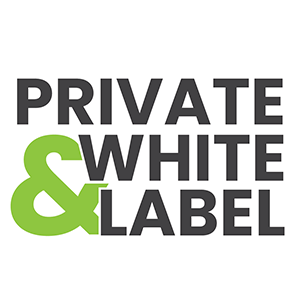Investigating Cannabinoid Interactions with Medications: A Comprehensive Guide
Introduction
In recent years, the conversation surrounding cannabinoids like CBD (cannabidiol) and THC (tetrahydrocannabinol) has exploded. As more individuals explore these substances for therapeutic benefits, understanding how they interact with conventional medications becomes crucial. This comprehensive guide will explore the nuances of cannabinoid interactions with medications, equipping you with essential knowledge for safe and effective use.
Understanding Cannabinoids and Drug Interactions
Cannabinoids interact with the body in complex ways, primarily through the cytochrome P450 (CYP450) enzyme system. This system plays a pivotal role in metabolizing various medications, meaning that cannabinoids can significantly influence how drugs are processed in our bodies.
Mechanism of Interaction
The CYP450 enzyme family is responsible for breaking down many drugs, allowing for proper regulation of their levels in the bloodstream. When cannabinoids enter the mix, they can compete for these same enzymes, resulting in either increased or decreased effects of the medications. Here are some details to consider:
- Inhibition: Cannabinoids, especially CBD, can inhibit certain CYP450 enzymes, which may lead to elevated drug levels in the bloodstream and a heightened risk of side effects.
- Activation: Conversely, some cannabinoids may activate enzymes, causing drugs to be metabolized more quickly, which can reduce their effectiveness.
Understanding this mechanism is key for anyone considering using cannabinoid products alongside their prescription drugs.
High-Risk Medications
Certain medications are particularly susceptible to interactions with cannabinoids:
- Anticoagulants (Blood Thinners): Drugs like warfarin are crucial for preventing clots. Cannabinoids can affect their metabolism, potentially increasing bleeding risks. For example, patients using CBD have reported changes in their International Normalization Ratio (INR), necessitating close monitoring by healthcare providers.
- Immune-Suppressants: For transplant patients relying on drugs such as tacrolimus, combining these with cannabinoids could compromise the body’s rejection response and lead to serious consequences.
- Sedatives and Anti-Anxiety Medications: The sedative characteristics of cannabinoids can amplify the effects of medications like Xanax or Ambien, leading to increased drowsiness and cognitive impairment.
- Antidepressants and Anticonvulsants: The interaction with drugs like Zoloft or Tegretol can promise adjustments in their effectiveness and raise the possibility of adverse reactions.
Identifying and Managing Interactions
Recognizing potential drug interactions with cannabinoids is critical for patient safety. Here’s how to navigate this intricate landscape effectively.
Tools and Resources
- CANN-DIR App: Developed by researchers, this handy resource allows healthcare providers and patients to identify potential interactions between cannabinoid products and a wide range of medications, giving insights into the metabolic effects of THC and CBD.
- Drug Interaction Checkers: Many of these tools now include data on cannabinoid interactions, making them invaluable for healthcare professionals.
Best Practices
To mitigate risks associated with cannabinoid use, consider the following best practices:
- Consult Healthcare Professionals: Before beginning cannabinoid use, consult with your healthcare provider. They can guide you and help monitor potential interactions.
- Timing of Medications: To limit interactions, try to avoid taking cannabinoids within a two-hour window of other medications.
- Monitoring and Adjustments: Regular monitoring of medication levels and therapeutic effects is essential. This helps ensure both the cannabinoids and conventional medications are working effectively and safely.
Safety Considerations
The safety of using cannabinoid products alongside conventional medications cannot be overstated. There are a few risks to remain vigilant about.
Adverse Effects
Here are some potential adverse effects that could arise from drug interactions:
- Bleeding Complications: Increased bleeding risks can occur when anticoagulants are used in conjunction with cannabinoids.
- Cognitive Impairments: Mixing sedatives with cannabinoids may cause extreme drowsiness or confusion, impairing judgment and reaction times.
- Cardiac and Pulmonary Complications: The combined impact may lead to cardiovascular issues, including lowered heart and respiratory rates.
Communication and Education
Open dialogue between healthcare providers and patients is paramount. Patients should feel empowered to ask questions about the potential risks and benefits of combining cannabinoid products with existing medications. Utilizing resources like the CANN-DIR app can facilitate these important conversations and improve patient outcomes.
Conclusion
Navigating the complexity of cannabinoid interactions with conventional medications is vital for ensuring patient safety and therapeutic efficacy. By understanding how these substances work, identifying high-risk medications, and using reliable tools for managing potential interactions, both healthcare providers and patients can work toward safe, effective treatment options.
Actionable Takeaways
- Always Consult Healthcare Providers: Before considering cannabinoid products, discuss them with your healthcare professional, especially if you’re on other medications.
- Utilize Interaction Tools: Make use of apps and resources like CANN-DIR to check for potential interactions.
- Monitor Your Medications: Keep an eye on medication levels to ensure that everything is functioning effectively. Your healthcare provider can assist in this monitoring.
- Educate Yourself: Stay informed about the benefits and risks of cannabinoid products to make educated choices regarding your health.
By adhering to these guidelines, you can successfully incorporate cannabinoid products into your wellness routine, enhancing your health while minimizing risks. After all, informed decisions pave the way toward positive outcomes in the ever-evolving world of healthcare.




















